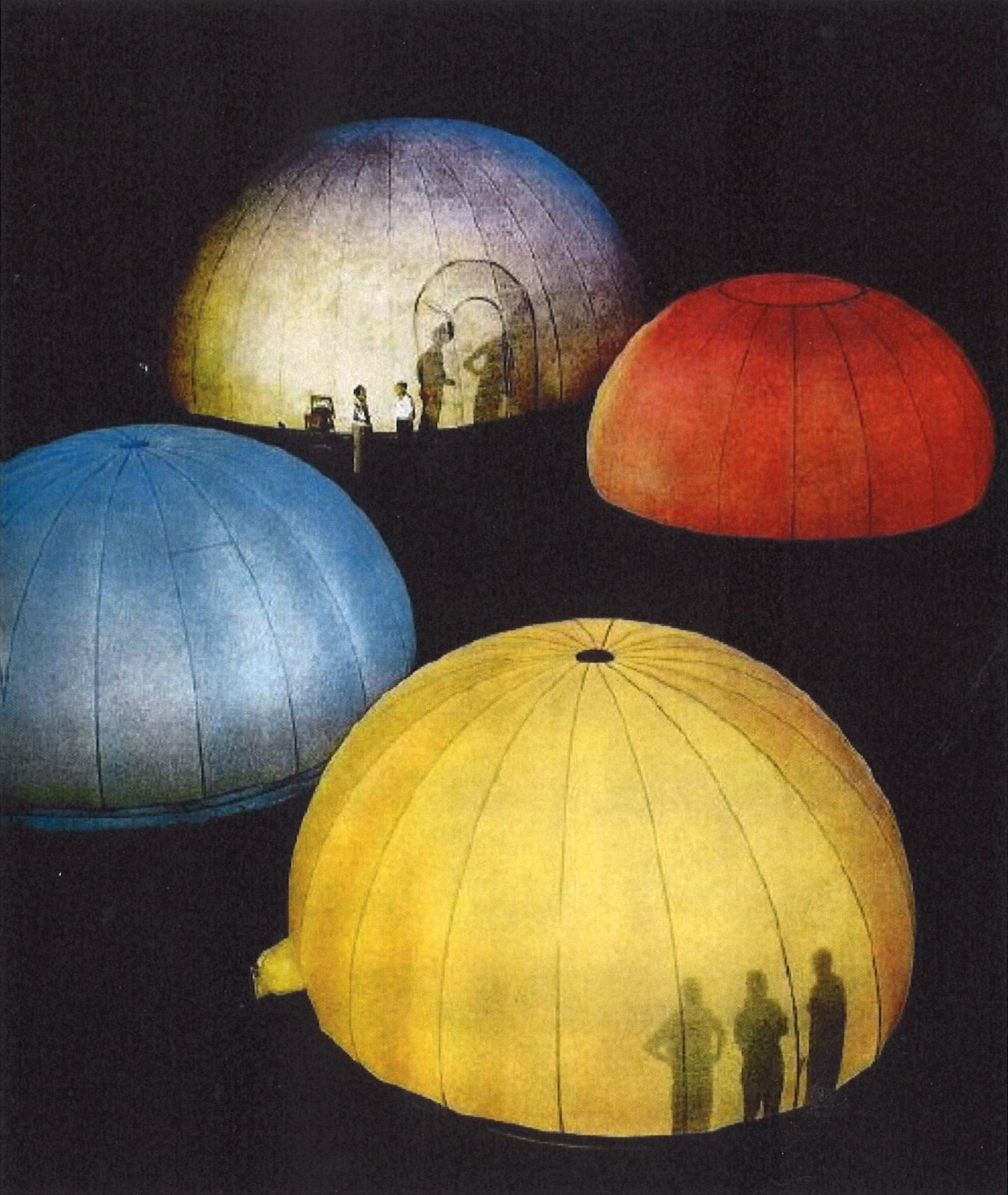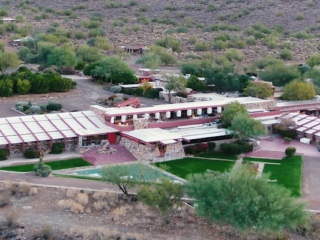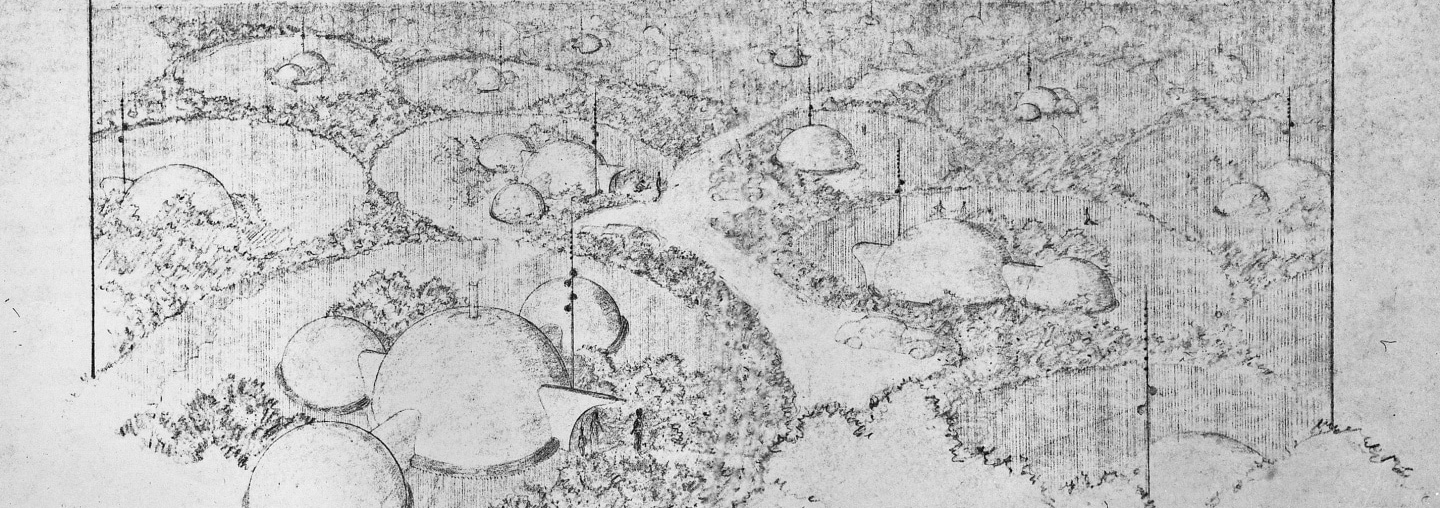
Frank Lloyd Wright’s Inflatable Architecture Experiment
Frank Lloyd Wright Foundation | Mar 29, 2019
In the late 1950s, Frank Lloyd Wright experimented with inflatable architecture when he created Fiberthin Airhouses, an innovative, affordable living space made from a durable nylon material. Like many of Wright’s designs, the Fiberthin Airhouses were seen as a thing of the future.
Throughout Frank Lloyd Wright’s lifetime and career, his ideas and designs were continuously seen as radical and ahead of their time. Today, his timeless solutions for changing the way people live are still recognized for their innovative qualities. In the 1950s, Wright worked with the United States Rubber Company to develop a unique, yet practical, space for living. The idea for the project was to experiment with a durable vinyl-covered nylon material called fiber thin to create an affordable, well-designed shelter that could be used for vacation homes. In exchange for his work on the Fiberthin Airhouse project, the U.S. Rubber Co. provided Wright with fiber thin material for the roof of the Music Pavilion at Taliesin West, Wright’s winter home and desert laboratory in Scottsdale, Arizona.
The project certainly piqued Wright’s interest, as affordable, beautiful housing was something he had often pursued in his work. Ultimately, Wright designed the Fiberthin Airhouse, a 20-foot in diameter dome-like inflatable structure made of fiber thin, which is 40 percent lighter than waterproof canvas and four times as strong. The shelters were weighed down by a base of sand or water.
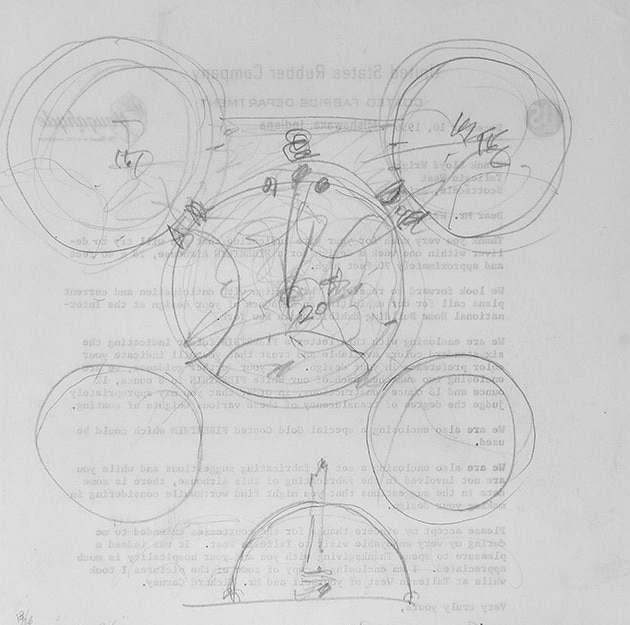
Frank Lloyd Wright’s initial sketches of the Fiberthin Airhouses on the back of a letter from the United States Rubber Company in 1956.
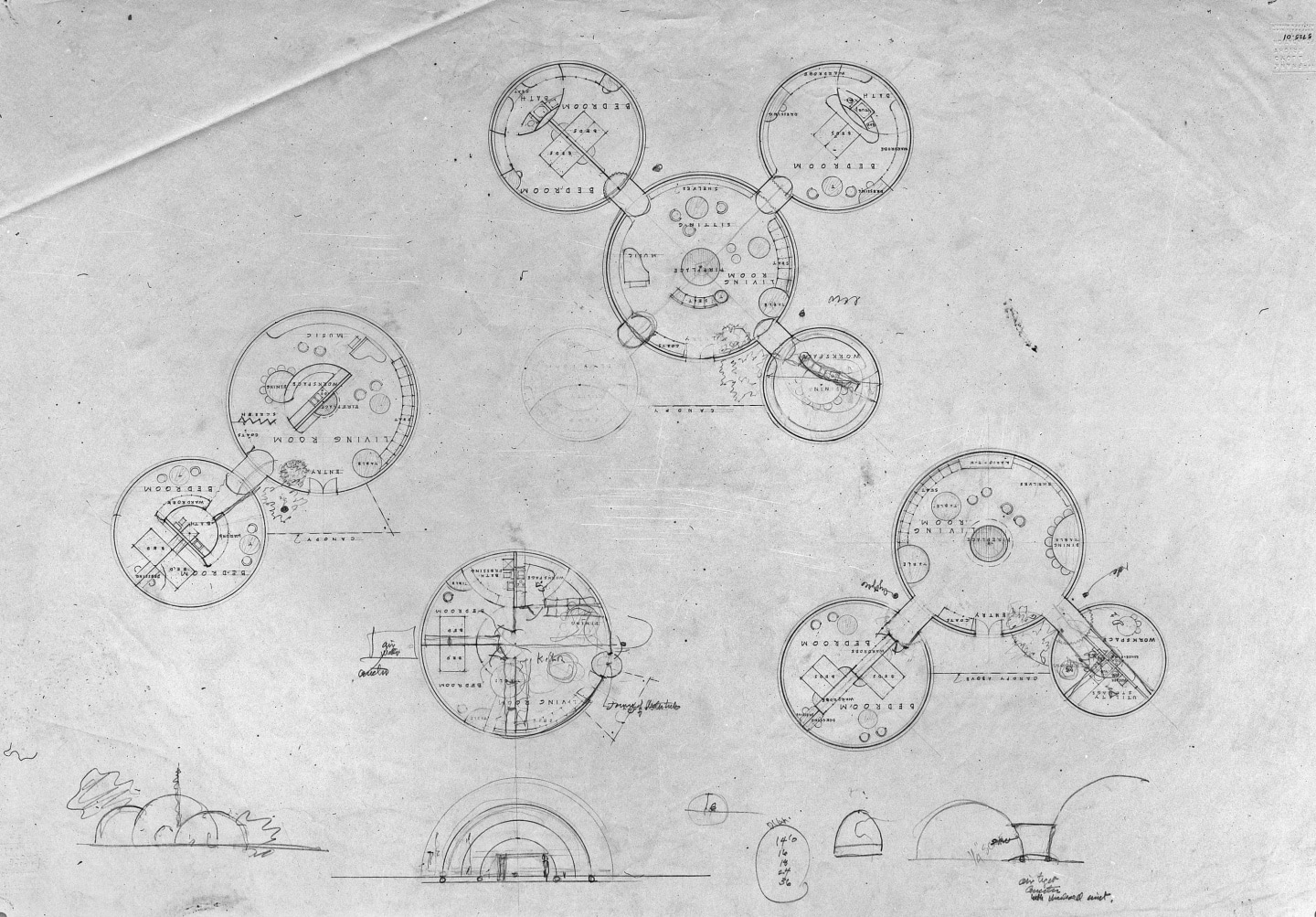
Frank Lloyd Wright’s design for Fiberthin Airhouses that included living rooms, bedrooms and workspaces.

Frank Lloyd Wright’s Rubber Village, 1956.
Wright received a bit of press for these modern, attractive-looking houses. He designed a community of Fiberthin Airhouses called Rubber Village, which was debuted at the New York International Home Building Exhibition in May 1957. In addition, a photo of Wright’s Fiberthin Airhouses from a pop-up at a Kentucky university appeared in the November 11, 1957 issue of Life magazine, in an article that focused on advancements in technology and the future.
Not everyone was receptive to the concept of inflatable houses. In a 1957 article, journalist Phyllis Battelle poked fun at Wright and his unconventional idea, writing:
“Mr. Frank Lloyd Wright, the architect who has tucked homes away in caves and vainly tried to preserve the American family under glass, has come out with a new house plan that may well be his piece de ridiculous. At the age of 87, he is reverting to what can only be considered an adolescent fascination for balloons. For the latest design of the sometime genius is an ‘air house,’ which can be pulled out of a suitcase, blown up into a 25 by 46-foot, three room manese, and sand bagged to the ground to keep its residents from floating off to heaven sooner than intended.”
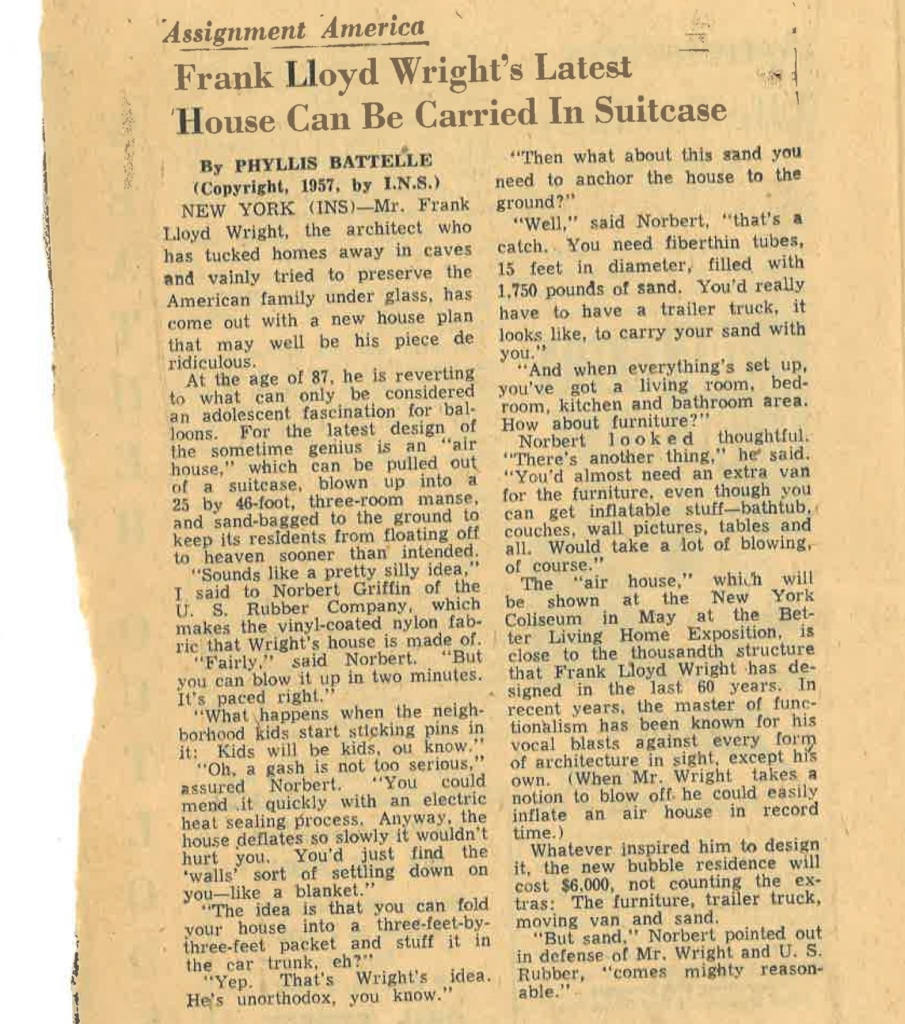
Clipping of a 1957 article authored by Phyllis Battelle.
Wright was only involved in the Fiberthin Airhouse project for a short period of time and although the houses were innovative and affordable, they did not end up having massive long term success. In response to the lack of popularity of the houses, as well as minor mishaps with the structures, Wright issued the following statement in a press release on November 20, 1957:
“Tempest in the public teapot over the U.S. Rubber Company’s own invention of a cheap transitory shelter is funny. If a tire blows out nobody gets excited. If a plane falls we go on flying. If one of their inflated rubber shelters blows down – not knowing the facts – I can only say that it does not invalidate their idea. The attention drawn by the mishap will be, I hope, to their advantage. I believe their idea – though still in experimental stage – still good and a great advantage where camping out can be put on better terms. We will see. All I did for them was to make a tidy little village for exhibition out of their transient balloon shelters.”

